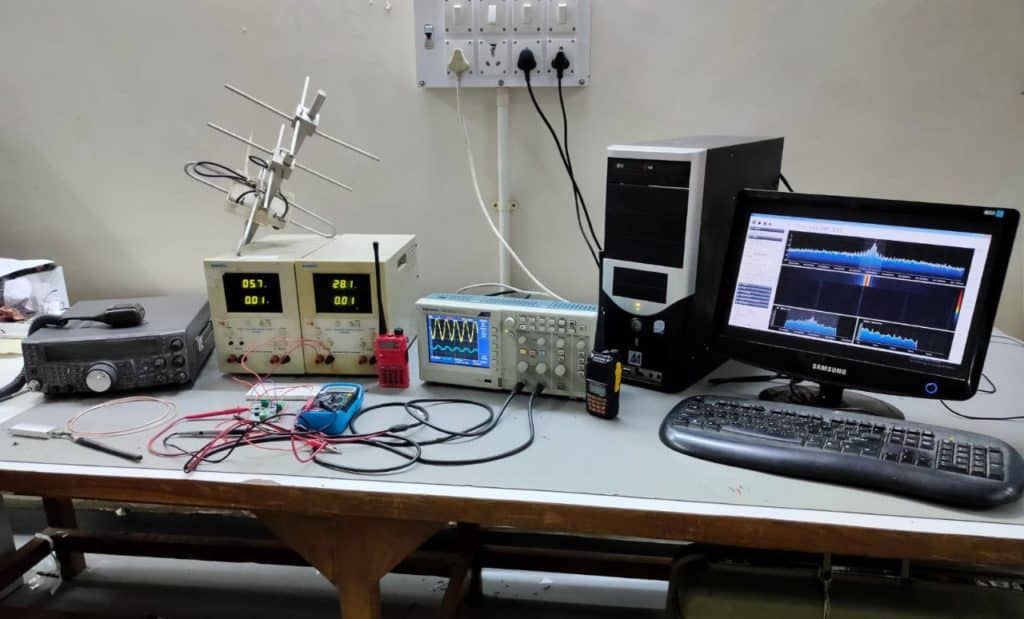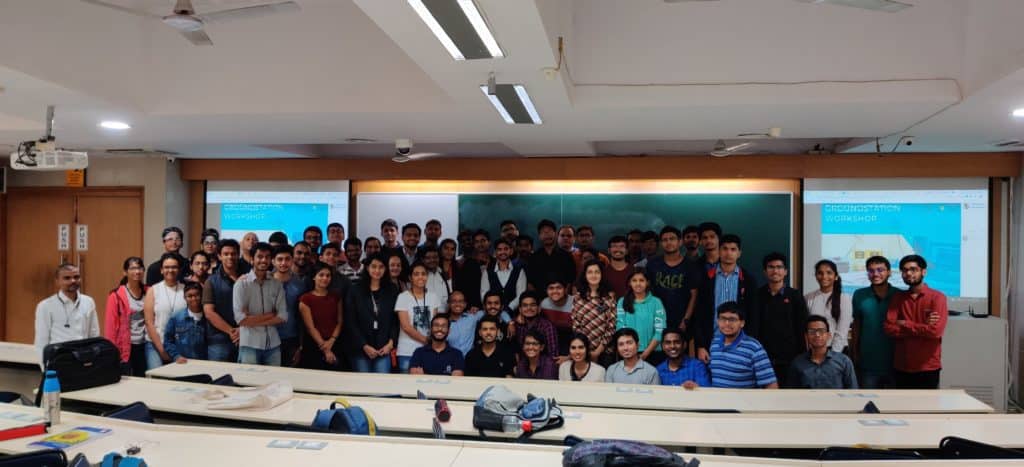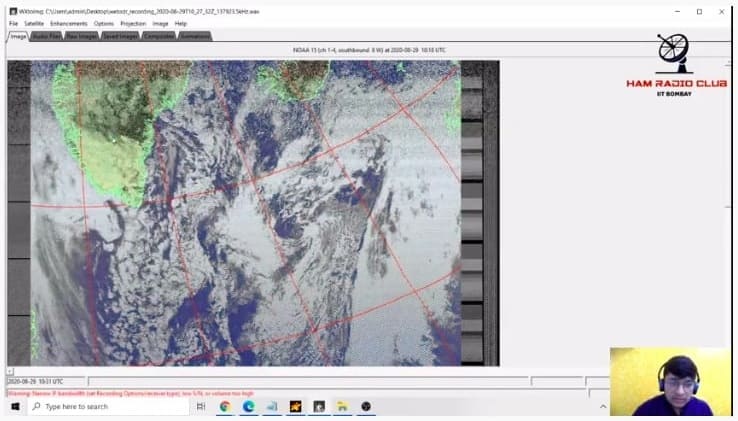Anyone without a hobby would have perished during lockdown!
Hobbies are a diversion from our routine life, and help to unburden our minds from various problems. They result in networking, get us in touch with like-minded communities of people with whom we can discuss our common interests, and help one another in improvement.
Our hobby is amateur Radio, commonly called ham radio.
Ham Radio Club, IIT Bombay

Ham Radio Club, IIT Bombay was founded in 2017. “We bring people, communication and electronics together.”
Ham radio is a form of two-way wireless communication that uses the same radio frequency spectrum as commercial radio stations, police and fire departments, and professional two-way radio (such as aviation and maritime services), but the frequencies are specifically allocated to ham radio, for non-commercial purposes.
To communicate using ham radio, one needs to send signals (voice, morse code, internet) using a transmitter with an antenna, and these are received (and deciphered if required) at the other end. The equipment used these days can be quite compact, like a handheld radio for VHF, or a bigger radio-like device for HF communication.

With an aim to foster and grow the Amateur Radio community in the institute and beyond, the club has been conducting several annual events. These include talks, lectures and hands-on sessions on various aspects of wireless communication – antenna making , how things work , satellite tracking, and the like. Every year, the club hosts a ground station workshop for colleges that want to build an autonomous ground station in their institute. (A ground station is a place on Earth that contains all the required equipment to receive, transmit and process data from a satellite or another Ham.)
During the lockdown, we, the Hams from IIT Bombay, started a blog (read it here) and have been regularly posting articles about the history of Ham Radio development through the twentieth century, the technical aspects of Ham Radio communication, and how to get started. We’ve also been active on social media (Facebook, Instagram and YouTube). We’re really happy that our online initiatives brought in a lot of interest for Ham Radio.
We would like to share some of our knowledge in this piece.
Rich in history
Remember the old days of wireless telegraphy? dit dit dit… daa daa daa… dit dit dit… This was how SOS signals were sent, and telegrams too. Well, this was how ham radio came about. Developed in the first half of the twentieth century, wireless telegraphy technology later attracted many passionate people who started using it to communicate with random strangers on-air as a hobby.
Ham radio operators played a significant role during the world wars. In India too, during the fight for independence, they helped in coordinating between the forces and increasing awareness amongst the people about the struggle.
With mobile phones and the internet, one may wonder what role ham radio plays today.
A significant advantage of ham radio is that it doesn’t need any infrastructure other than a transceiver (transmitter-receiver) and can be used to communicate easily and efficiently through large distances on Earth or in space. Yes, you read it right, Ham Radio can be used to contact astronauts in space. NASA has recognized Amateur Radio as a way to attract students towards space science, and the astronauts on the International Space Station send out signals to talk to people on Earth once in a while.
The minimal infrastructure makes the work of Ham Radio operators instrumental at the time of disasters when all the standard communication equipment gets disrupted (e.g. Uttarkhand floods of 2012). At such times, the only way to coordinate relief operations is through ham radio. So it works as a comprehensive disaster management system.


Ham operators often use Q-codes to communicate. Q-codes were developed to make morse code efficient, but they’re extensively used by Hams even today. It is like a language by itself and one can have full conversations using Q-codes and morse numbers. For example, if you want to ask someone where he is located, all you need to say is “QTH”. “73” means best regards. And if you’re missing a loved one, “88” will send them hugs and kisses.
Online satellite tracking
On 29th August 2020 we held a YouTube Live stream demonstrating the process of receiving images of Earth by tracking the weather satellite NOAA-18 online.
With 600+ overall views by the end of the session, it was an interactive and insightful experience where the viewers also tried their hand in some parts of the tracking process. One of our viewers, Neilabh Banzal tracking simultaneously with us, completed the decoding process and shared the image.

The world over, there is uncertainty about the future of ham radio. However, the enthusiasm displayed during the session showed that ham radio is definitely on the upswing in India, and will be adding a lot of new members to its community in the coming days. The overall response was overwhelming and made us feel that our efforts in promoting ham radio are bearing fruit.
For those who couldn’t attend the session, we have uploaded the recording on our YouTube channel Ham Radio Club IIT Bombay. And all the resources like the process of satellite tracking, the required links, the software, and everything else that is required to track a satellite has been added to our Ham Radio 101 blog.

License to broadcast
Over the years, wireless telegraphy all over the world, saw several government regulations because of the power of the Ham Radio community to affect communication.
In India, the Wireless & Planning Coordination Wing (WPC) of the Ministry of Communications is the National Radio Regulatory Authority responsible for Frequency Spectrum Management, including licensing and caters to the needs of all wireless users in the country.
To become a ham radio operator, one needs to pass an exam conducted by the authorities. The exam tests you on radio theory and practice, radio regulations (including HAM language), and morse code is required for certain grades of licences.
Once you pass the exam, a license to operate and possess a radio station is issued, and a unique “call-sign” is assigned. A call-sign is used to identify the person and his/her transmitting station. Call-signs are are combination of letters and numbers, and each country has its distinct prefix. All Indian call-signs begin with VU.
Of course, it’s a great hobby – a way to spend time staying in touch with people from all over the world in what is an unconventional communication channel these days.
If you would like to know more about HAM Radio and how to become a ham, we are happy to help and guide you. Get in touch through Facebook or email hamradioclub.iitb@gmail.com / pm.satlab.iitb@gmail.com.
Mumbai Amateur Radio Institute (MARI) is a Mumbai-based non-commercial organisation for Amateur Radio operators. Reach out to them on Facebook or their website.